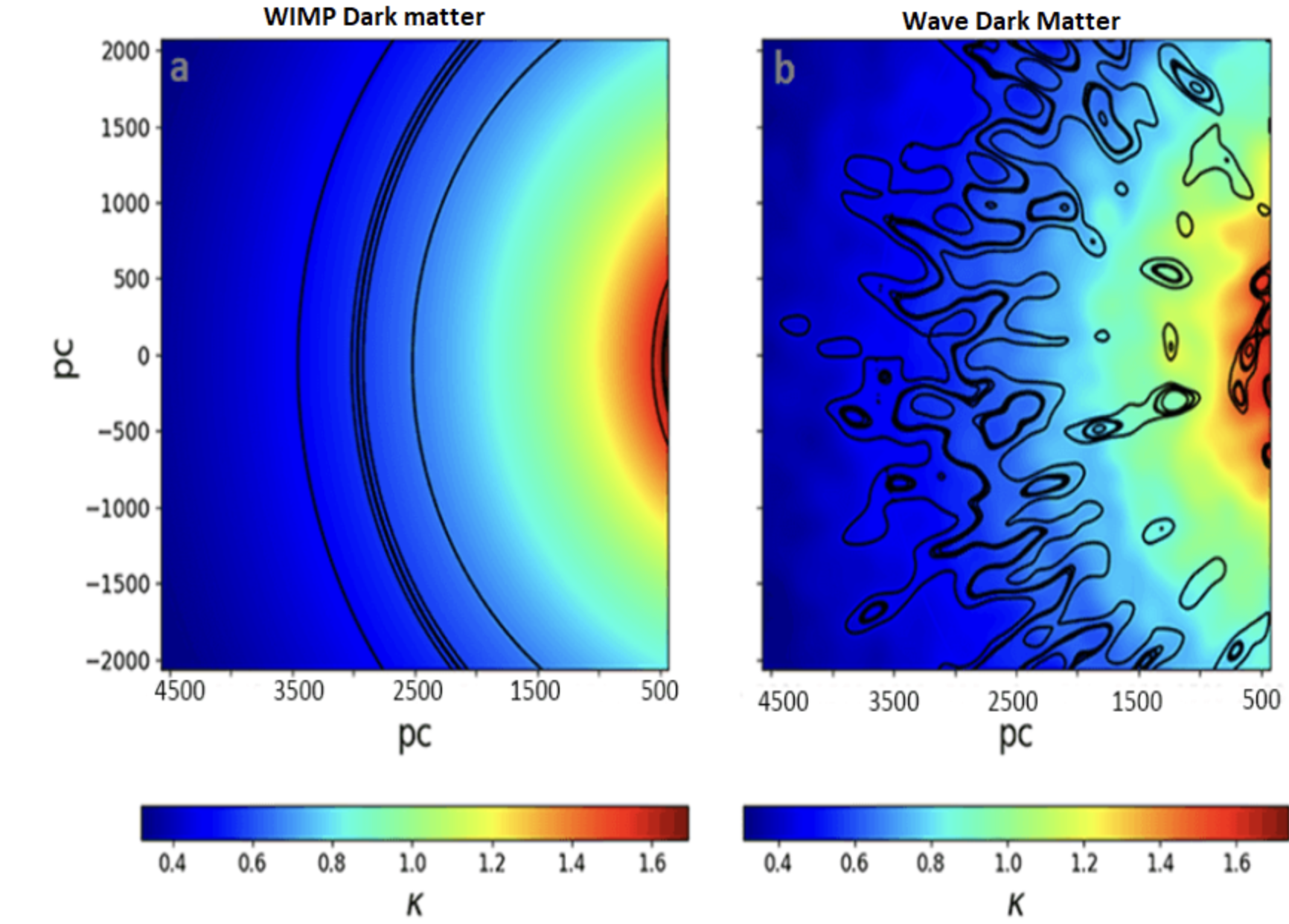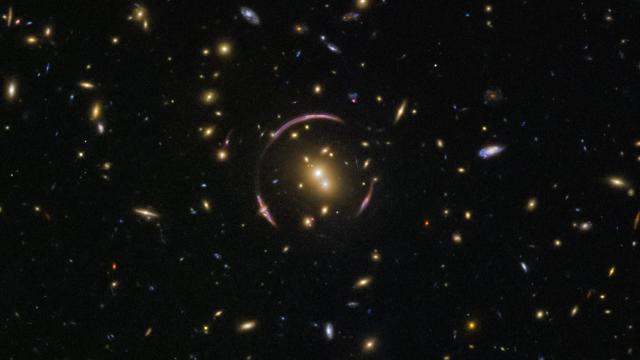A team of scientists studying lensed ‘Einstein rings’ of light from the distant universe have found that signatures in the rings indicate the kind of dark matter that inhabits the background galaxies.
Specifically, the researchers looked at lensed images of HS 0810+2554, a distant quasar, and found the presence of wave-like dark matter. Their research is published today in Nature Astronomy.
“In our work, we test a prediction made by wave-like dark matter for the first time ever,” wrote Alfred Amruth, an astrophysicist at the University of Hong Kong, Kowloon, and the study’s lead author, in an email to Gizmodo. “This is a unique prediction of wave-like dark matter, and we use Einstein’s prediction of gravitational lensing as our tool.”
Let’s step back for a moment. Dark matter apparently makes up about 27% of the universe, but scientists don’t know what it is. Dark energy makes up about 68% of the universe, and, along with dark matter, it’s filed into the big unexplained-stuff-in-the-universe bucket.

Scientists know dark matter is there because of its gravitational effects, which can be observed on large scales; when we look at the motions of galaxies and the warping of light around them, it’s clear there’s more matter present than what we can actually see. Whatever the stuff is, though, it’s not visible to us and it hardly seems to interact with normal matter.
Einstein rings are one such product of light being warped by gravity; as light from a distant source travels through space and passes a massive object, the light is bent around the interceding object by the latter’s gravitational field. In some cases, the bent light forms a near-perfect ring around the object from our perspective and allows us to see things that might otherwise be hidden from view.
There are a couple leading candidates for dark matter (and it’s not a zero-sum game; multiple candidates could be contributing to the dark matter in the universe). Weakly Interacting Massive Particles (WIMPs) are theoretical things that have mass and behave like particles but only interact barely with ordinary matter — hence our inability to identify them.
The other major candidate is the axion, a theoretical particle (a boson, to be specific) named for a laundry detergent. The axion would be much smaller than a WIMP and has been theorised to behave more like a wave than a particle, like photons of light.
In the new work, the research team sought to understand a longstanding quandary in astronomy: the reason that lensed quasars (distant galaxies that look like stars) fluctuate in brightness. Models built on WIMPs have difficulty reproducing the brightness of multiply lensed quasars, Amruth said. But the researchers found that wave-like dark matter was able to reliably reproduce the brightness anomalies of a quasar called HS 0180+2554.
The new finding “definitely tilts the balance towards axions as a DM candidate, and forces people to learn to let go of the WIMP paradigm,” Amruth said. “Regardless, it forces us to consider new physics beyond the Standard Model of particle physics.”
Dark matter is not accounted for in the Standard Model, the overarching theory that describes the four fundamental forces and the behaviour of the smallest particles we know about. The model also doesn’t account for gravity, which doesn’t seem to exist on subatomic scales, raising further questions about exactly how dark matter — wave-like or massive — affects its surroundings gravitationally.
In simulated images of the dark matter model, the team found that the WIMP model predicted smooth curves to the Einstein ring; the wave-like dark matter model found a much more chaotic, amorphous edge to the ring. That chaotic rim corresponds to the brightness fluctuations seen in the quasar.

Though the team has just tested one quasar, “This indicates that wave-like DM is probably generally applicable to the vast range of lensing anomalies we see in different systems,” Amruth said. They have now turned to brightness anomalies in a lensed supernova, and their early results suggest that wave-like dark matter may be responsible.
This doesn’t mean that WIMPy dark matter doesn’t exist — just that it doesn’t appear to be the dark matter involved in at least some gravitational lenses.
More observations and modelling must be done, but with new observatories in space (the Webb Space Telescope) and on the horizon (the Rubin Observatory and the Roman Space Telescope), some questions about dark matter and its nature may soon be resolved.
More: Webb Telescope Uses Gravitational Lensing to Scrutinize Pandora’s Cluster
